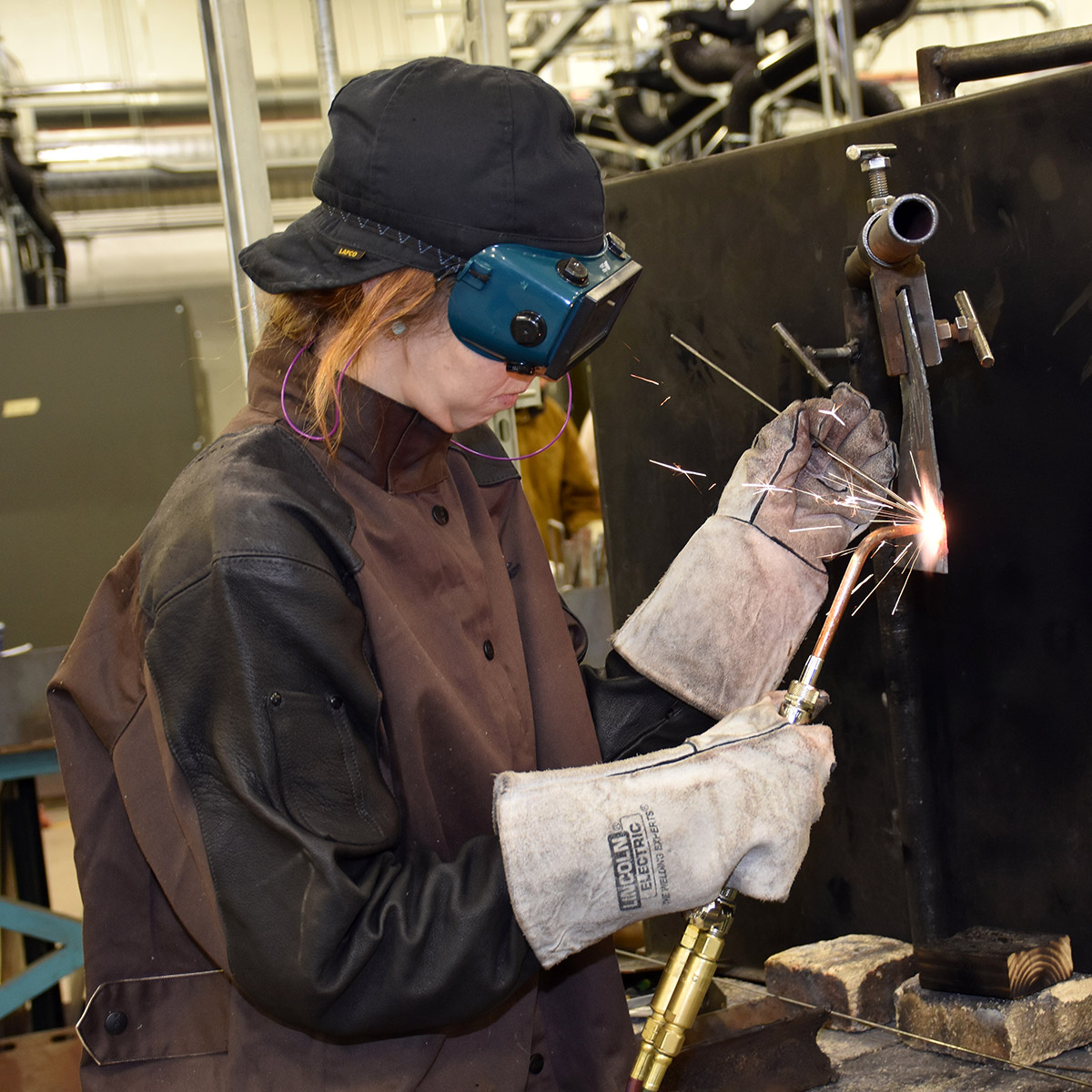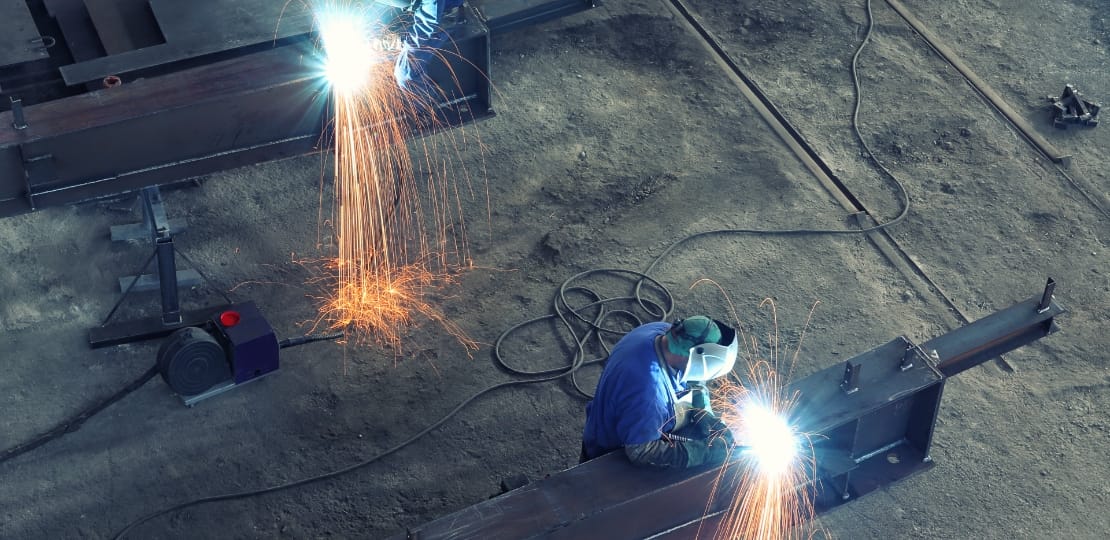Usual Welding Repair Work Issues and How to Address Them Effectively
Welding fixings typically encounter a variety of issues that can jeopardize the stability of the last item. Usual problems consist of inadequate penetration, porosity, and imbalance, among others. Each flaw presents one-of-a-kind obstacles that need details approaches for resolution. Recognizing these issues is important for welders aiming to enhance their results and skills. This discussion will certainly check out these usual welding repair service problems and reliable approaches to resolve them.
Insufficient Penetration
Insufficient infiltration happens when the weld steel fails to totally fuse with the base product, leading to weak joints and potential structural failures. This issue commonly originates from not enough warm input, inaccurate electrode angle, or incorrect welding rate. Welders might run into inadequate infiltration as a result of a mistake of the needed parameters for a particular material thickness or type. Furthermore, contamination on the base product's surface can prevent efficient bonding, aggravating the trouble. To address inadequate infiltration, welders must ensure appropriate setups on their tools and maintain a clean job surface. Normal assessment of welds is advised to identify any type of shortages early, permitting timely corrections and the avoidance of endangered structural stability in welded settings up.
Porosity
Porosity is a typical problem in bonded joints that manifests as small gas bubbles caught within the weld steel. This problem can endanger the stability of the weld, bring about reduced toughness and potential failing under tension. Montana Mobile Welding and Repair Welding. Porosity generally develops from contamination, dampness, or inappropriate welding strategies, which allow gases to leave right into the molten weld pool. To resolve porosity, welders ought to assure proper surface area prep work, keep a tidy working setting, and utilize appropriate welding parameters. Additionally, picking the ideal filler product and protecting gas can minimize gas entrapment. Routine evaluation and testing of welds can assist identify porosity early, ensuring timely restorative activities are taken, thus preserving the top quality and reliability of the welded framework
Misalignment
Imbalance in welding can arise from numerous elements, consisting of incorrect setup and thermal growth. Understanding the root creates is vital for effective resolution. Numerous adjustment methods are offered to straighten components and ensure architectural integrity.
Root causes of Imbalance
Welding misalignment typically stems from a range of underlying issues that can jeopardize structural honesty. One key reason is inappropriate fit-up of components prior to welding, which can cause voids and uneven surfaces. Variations in thermal growth during the welding procedure can additionally cause distortion, particularly if the materials being signed up with have various coefficients of development. In addition, poor fixturing and clamping may stop working to hold elements safely in position, resulting in movement throughout welding. Poorly kept devices, including welding makers and devices, might introduce inconsistencies in the weld bead, further adding to misalignment. Ultimately, driver mistake, coming from not enough training or experience, can additionally play a substantial function in creating misaligned welds.
Improvement Techniques Available
Resolving imbalance effectively needs a combination of corrective strategies customized to the particular problems at hand. One typical technique is making use of components or jigs to hold components in the appropriate position throughout welding, guaranteeing constant positioning. In addition, preheating the products can help in reducing distortion and improve fit-up. For considerable imbalance, mechanical adjustment strategies, such as utilizing hydraulic jacks or clamps, can be used to deal with the placement before welding. Post-weld warmth therapy might likewise be essential to alleviate stress and anxieties triggered by misalignment. Ultimately, mindful examination and adjustment throughout the configuration stage can prevent imbalance concerns from coming to be considerable problems, promoting a smoother welding process and enhancing overall structural honesty.
Distortion
Distortion is a common obstacle in welding that can emerge from different variables, including uneven home heating and air conditioning. Recognizing the sources of distortion is important for carrying out efficient prevention techniques. Addressing this issue not just improves architectural integrity yet additionally boosts the overall high quality of the weld.
Sources of Distortion
When subjected to the intense warm of welding, materials commonly undertake changes that can cause distortion. This phenomenon mainly emerges from thermal growth and contraction during the welding process. As the weld location warms up, the material increases; upon air conditioning, it contracts, which can develop internal stresses. On top of that, uneven heating across a workpiece can worsen these anxieties, causing warping or bending. The sort of product also plays a considerable role; metals with differing thermal conductivity and coefficients of growth may react in different ways, leading to unforeseeable distortions. Moreover, inadequate joint design and poor fixturing can add to misalignment during welding, enhancing the chance of distortion. Recognizing these causes is important for efficient welding repair and prevention techniques.
Avoidance Techniques
Effective prevention methods for distortion during welding concentrate on controlling heat input and ensuring correct joint style. Keeping a regular heat input aids to minimize thermal development and contraction, which can bring about distortion. Making use of strategies such as pre-heating the workpiece can also reduce the temperature level slope, promoting consistent home heating. Furthermore, picking ideal joint layouts, such as T-joints or lap joints, can enhance security and decrease anxiety concentrations. Executing proper fixturing to protect the work surfaces in place further aids in maintaining alignment during the welding procedure. Staggered welding series can disperse warm a lot more evenly, avoiding local distortion. By applying these approaches, welders can considerably reduce the probability of distortion and enhance the general high quality of their welds.
Cracking
Splitting is a common issue experienced in welding fixings, commonly resulting from different factors such as incorrect air conditioning rates, material selection, or insufficient joint prep work. The incident of cracks can significantly compromise the honesty of the weld, leading to possible failures throughout procedure. To address this issue, welders have to first assess the source, making sure that products are suitable and properly chosen for the particular application. Furthermore, this hyperlink controlling the air conditioning rate throughout the welding process is crucial; quick cooling can cause anxiety and cause fracturing. Appropriate joint layout and preparation likewise add to lessening the danger. Carrying out these strategies can boost weld top quality and durability, ultimately reducing the chance of cracking in completed weldments.

Insufficient Combination
A substantial try this website issue in welding fixings is insufficient blend, which occurs when the weld metal does not effectively bond with the base product or previous weld passes - Fabrication. This flaw can cause weaknesses in the joint, possibly endangering the integrity of the welded structure. Aspects adding to incomplete blend include not enough warmth input, incorrect welding strategy, and contamination of the surfaces being joined. To address this problem efficiently, welders ought to ensure correct pre-weld cleaning and surface preparation, in addition to readjust their welding criteria to accomplish ample infiltration and fusion. Normal assessment throughout the welding process can also aid recognize incomplete combination early, enabling timely corrective measures to improve the total quality of the weld
Overheating
While welding repair work can boost architectural stability, overheating provides a considerable challenge that can result in product degradation. Extreme heat during welding can alter the mechanical residential properties of metals, resulting in lowered toughness, raised brittleness, and bending. This sensation is especially critical in high-stress applications where structural integrity is paramount. Identifying getting too hot can include visual examinations for discoloration or distortion, as well as checking temperature throughout the welding process. To mitigate the risks connected with getting too hot, welders should employ suitable strategies, such as controlling warmth input, changing traveling rate, and using suitable filler materials. Additionally, applying pre- and post-weld warmth treatments can assist recover material properties and improve the general high quality of the repair, ensuring long-term efficiency and safety.
Frequently Asked Concerns
What Are the Usual Indicators of a Welding Issue?

Just How Can I Examine My Welds for High quality?
To examine welds for top quality, one can make use of visual inspections, ultrasonic screening, and radiographic approaches. Each method assures structural stability, determines problems, and validates adherence to specified requirements, inevitably boosting the dependability of the welded joints.
What Safety Precautions Should I Take While Welding?
When welding, one need to prioritize security by putting on ideal personal protective devices, guaranteeing correct air flow, safeguarding combustible products away, preserving a tidy work area, and knowing environments to avoid injuries and mishaps.
Can I Fix a Weld Without Redesigning the Entire Joint?
Fixing a weld without remodeling the entire joint is feasible, depending upon the damage (Montana Mobile Welding and Repair). Strategies such as grinding, including filler product, or making use of a welding procedure can successfully address details flaws while preserving the surrounding framework
What Equipment Are Important for Effective Welding Fixes?
Vital tools for effective welding repair services consist of a welding maker, wire brush, grinder, safety equipment, clamps, and filler products. Each tool plays a vital duty in guaranteeing quality and security during the repair process. Porosity typically emerges from contamination, wetness, or inappropriate welding strategies, which allow gases click for more to run away right into the liquified weld pool. Inadequately conserved tools, consisting of welding makers and devices, might present inconsistencies in the weld bead, additional contributing to imbalance. When subjected to the extreme heat of welding, products often undergo modifications that can lead to distortion. Cracking is a common issue come across in welding fixings, commonly resulting from various aspects such as incorrect cooling prices, material choice, or inadequate joint prep work. A substantial concern in welding fixings is incomplete blend, which happens when the weld metal does not sufficiently bond with the base product or previous weld passes.